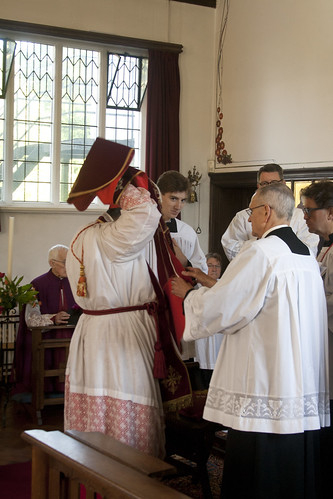
(A pre-scheduled post. Follow me on the Chartres Pilgrimage on Twitter: @LMSChairman )
Thanks to interactions on Twitter and in the comments of this blog, I've learnt a bit more on the history of seating in Catholic churches being segregated by sex. (For my previous post, see
here.)
One of the things which has puzzled me about it is that, although recommended in the 1917 Code of Canon Law (Canon 1262.1), I've come across no literary references to segregated seating in churches. But I think that the practice was never re-established in Catholic churches in England after the Reformation; the disruption of having to worship in secret and so on caused the custom to disappear, and it was never something which people felt strongly enough about to make a special effort to restore. (I read in Archer's
Two Catholic Churches that eyebrows were raised by some English Catholics at the restoration of such 'Italian' practices as the
Asperges before Sunday Mass, in the early 19th century.)
As I've already mentioned, I myself have seen segregated congregations: in 1990, in the Cathedral of Tabora in Tanzania. At that time it wasn't practiced in the commercial capital, Dar es Salaam.
I've now heard from several people in Ireland who can vouch for it surviving in rural districts up to the time of Vatican II, and even later: the 1980s and 1990s. It is worth noting, as several did, that it wasn't
enforced: like mantillas today, it just happened, where it was a custom, with the odd person in the wrong part of the church either through ignorance or out of conscious defiance.
Here's a blog post talking about segregation in a church in Nova Scotia, Canada, up to the time of the Council.






